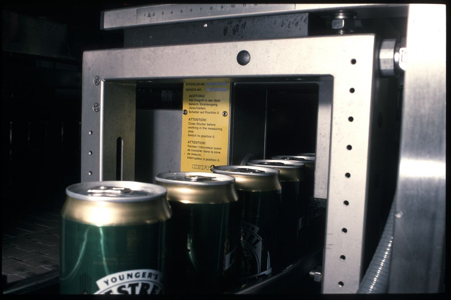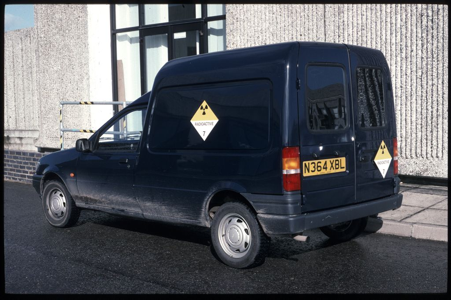pdf Contamination of brewery during source removal (2.24 MB)
Description of the incident
As part of a refurbishment programme in a brewery, four liquid level gauges, each containing a 3.7GBq americium-241 source, were removed from a production line and put into storage prior to disposal.
The sources were beyond their recommended working life and were no longer covered by a Special Form Certificate, thus requiring a Type B container to transport them. The americium-241 source assembly of each gauge was sandwiched between two stainless steel plates, attached to which were a shutter mechanism and mounting bracket. The radioactive material was incorporated within a thin-walled, stainless steel tube.
The disposal contractor brought only one Type B container to site as they intended to dismantle the gauges on site and transport all four americium 241 sources in one trip. It was discovered that the source assemblies, which were each about the size of a 13 A fuse were fixed in place with adhesive. The contractor’s employee forced them out of their housing using a screwdriver and placed them in the Type B container. The sources were damaged in the process. The work was carried out in the back of a small van in the visitors’ car park of the brewery, adjacent to a busy main road. The van driver then went to a second location about 100 miles away to collect some more equipment for disposal before returning to base.
A few days later, it was discovered that both the container and the van itself were significantly contaminated with americium-241. Subsequent monitoring revealed that the contamination was rather more extensive, and included other vehicles and properties. The latter included the original brewery car park, subsequent places visited and the home of one of the workers. The company reported the incident and a detailed investigation commenced.
The investigation showed that:
- the contractor did not discuss the job with the brewery or its Radiation Protection Adviser and had inaccurate information about the size of the gauges;
- alternative methods of work had not been considered; and
- there was doubt about whether the available radiation monitoring instrument was capable of being used – when the batteries of the radiation monitor were checked some days later these were found to be flat.

A typical liquid level gauge in use

The gauge heads were dismantled in the back of a small van in the brewery car park
Radiological consequences
The doses involved were primarily from intakes of americium-241 and the committed effective dose equivalents were estimated to be 20 mSv and 2 mSv for two employees of the disposal contractor and less than 1mSv for the wife of the highest exposed contractor.
Lessons learned
Equipment holding radioactive sources should, wherever possible, be transported with the source undisturbed to suitable facilities before dismantling takes place.
Where removal of sources on site is unavoidable, close liaison between the companies (and their respective RPAs) should take place with a view to ensuring that adequate facilities are available for the work to proceed safely.
Local rules should clearly and unambiguously state what should be done (or not done) if conditions change during the work.
Contingency plans should be incorporated into local rules, made known to relevant employees, and practised.
After source manipulations appropriate monitoring should be undertaken. In situations such as this, contamination should always be considered possible – not just from the manipulation procedure, but also due to degradation of the source integrity because of the environment in which it has been used.
Means should be provided for the checking of radiation monitoring instruments on site before each use. Spare batteries should be carried with equipment.
pdf Contamination of brewery during source removal (2.24 MB)



